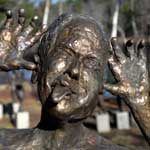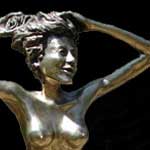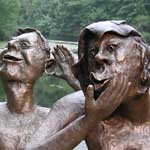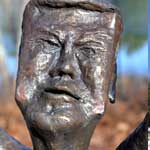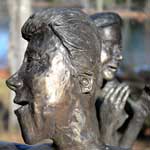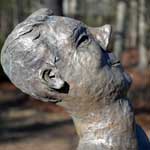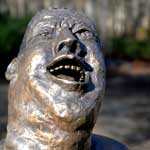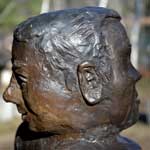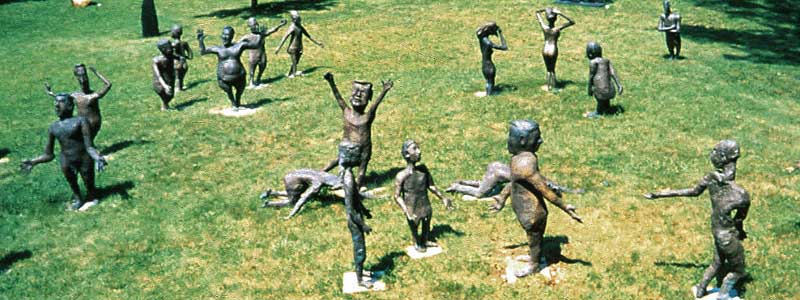
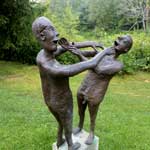
HUMANS
Nicholas Swearer's human narrative installations are a social didactic - raising questions and searching for answers. While the installations are a record of our time, they are also an observation on the universal human condition, seemingly unchanged throughout time and ever repeating.
In the language of the narrative installations, each character is an icon for an emotional or physical state, or for an action. Hence their names: Scolder, Victim, Antagonist and the like. More important than the individual characters/symbols is their integration into groupings, which allows for complex investigations of many sides of a topic at once.
These installations deal with issues of personal and social responsibility and focus primarily on four major themes: sexism, racism, ageism, and elitism. Depending on where, when and how these characters are arranged, different issues are explored. As characters are combined in different arrangements, their meanings can change, as well as their individual and group titles.
In order to reach a broad audience, the historic and permanent medium of figurative bronze sculpture is used. Sculpture takes up our physical space and does not rely on written or spoken language for the communication of ideas. Sculpture is its own language, made up of an infinite number of visual and tactile elements.
The figures are unclothed to allow them to be independent of past, present and future references. Without clothing, and the psychological protection it affords, the naked truth and our fragility as humans are revealed. Body type, gesture, abstraction, and sexuality are elements used to communicate through the work. The classical notions of beauty are intentionally played down in order to focus on emotional and interactive qualities of the work.
Viewers filter the work through their own perceptions, and therefore their interpretations may be quite different from Swearer's own. He provokes the interpreter to dialogue. This dialogue goes beyond expressing his opinions, and invites and reveals the opinions of the viewer.
